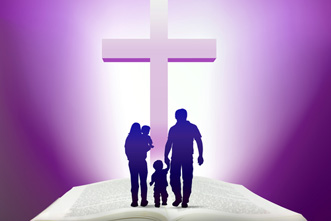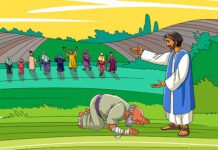Have you noticed it on your calendar yet? April 24? It’s Easter…you know, the holiday that we celebrate because it’s the foundation of our faith. I’ve got to admit that every year I get a little perturbed at the way the church skirts around intentionally addressing this time that should be full of incredible celebration. I shiver to think of the number of times I’ve participated in a staff meeting when someone said, “Hey, guys, did you realize that Easter’s only three weeks away?” Christmas gets such a hype and over-the-top attention, and then the death and resurrection of our Lord gets an afterthought.
Christmas has basically six units or events that are part of “the story.” But Easter…it’s an absolutely complex plethora of events! Between the time that Jesus enters Jerusalem and His resurrection, there are at least 27 significant events that take place. Because Jesus intentionally initiates or participates in each one of these events during His last days on this Earth, it only seems appropriate for us to set aside more than two weeks to pull out our magnifying glass to take a closer look. Did you realize that Jesus didn’t perform miracles this last week of His life? What it appears that He’s doing, though, is reminding His followers of important concepts. It seems that He’s saying, “Hey guys, don’t forget what I taught you about _____.” In these few days is when Jesus overturns the tables in the temple…when the woman anoints Him…when He curses the fig tree…when He gives the greatest commandment…when He responds to the dilemma about giving the coin to Caesar or to God…when He comments on the widow’s offering…when He gives us the parable of the marriage feast…just to mention some. Jesus CHOSE these specific events to be part of His last days. Shouldn’t we teach our children about all that took place that last week?
If your church is anything like the churches I’ve talked with, the celebration of Easter revolves around two Sundays. On Palm Sunday, we teach about Jesus entering Jerusalem, sending His disciples to prepare for the Passover meal, washing the disciples’ feet, giving of communion, Judas’ betrayal, and Jesus praying in the Garden of Gethsemane. Then, on Easter Sunday, we talk about Jesus’ arrest, Peter’s denial, Judas’ demise, the crucifixion, burial, resurrection, and the reaction of Jesus’ followers to finding the empty tomb. Read those two sentences over. Does that sound as ridiculous to you as it does to me? And along the way, we’ve left out everything we talked about in the previous paragraph—the way Jesus lived life in those few days in between. If we pull out only the crucifixion and the resurrection to talk about on one day (Easter), these two events hold so much significance individually that it feels like an impossible task to help a child really grasp the meaning of both. The crucifixion is deep, and it’s full. It’s more than Jesus having nails put in His hands and dying a brutal death. He became sin—ugly, nasty, spitting in God’s face sin. God, because He loves each one of us, offered His Son to become the thing He despised most—the thing He could not tolerate to be in the presence of. Can we really get all that across to children and then add on the resurrection, which is deep and full in its own right?
The challenge is to handle Easter as if it were a fine-cut jewel with many facets. Each side of this jewel is expertly crafted so that when you view all the facets together, understanding how each one contributed to the beauty of the whole, then you and the children you teach can value everything our Savior did for us in His last week. Elevate Easter in your eyes and in the eyes of the children you care for. Give them a new reverence for Jesus’ last words and actions.













